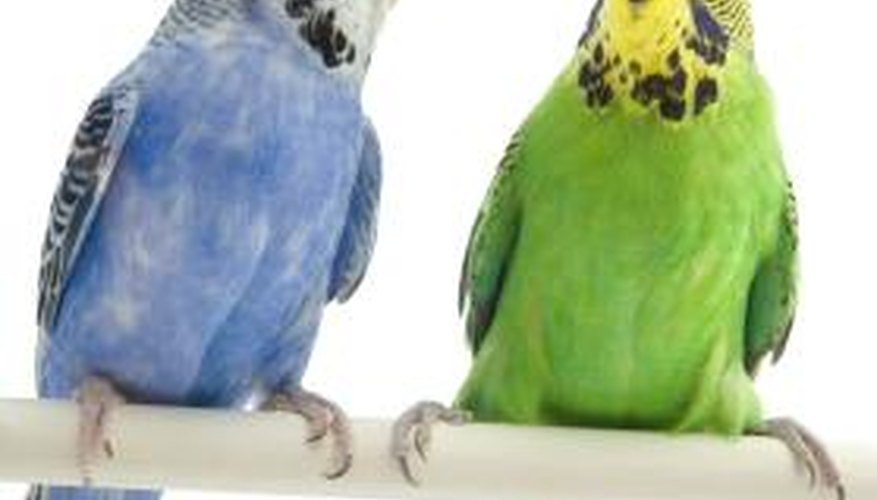Bourke's and budgies are both Australian parakeets in the Psittacidae family. The two species have similarities and differences. Both are small parakeets, ranging in size from 7 inches to 13 inches. They are easy to care for and make good pets. Bourke's are quieter and less playful than budgies and don't demand as much human interaction. Some people might consider the Bourke's parakeet too dull, while others might find the budgie too loud. Choosing one over the other depends upon how much you want to interact with your pet bird as well as the level of noise you tolerate and prefer.
Bourke's Parakeets
Bourke's parakeets are named for Sir Richard Bourke, who was governor of New South Wales, Australia, from 1831 to 1836 and was known for advocating equal rights and religious tolerance. Bourke's are quiet, calm and gentle parakeets. They are not as active as budgies, the typical pet parakeet, nor as rowdy. They also are more independent birds, not as needy as budgies for attention, and they can amuse themselves. Bourke's don't climb the cage bars and normally don't talk, though they do make quiet little noises. They are the only parakeet without any green colouring, and their tails, though long, have a wider, flat end.
- Bourke's parakeets are named for Sir Richard Bourke, who was governor of New South Wales, Australia, from 1831 to 1836 and was known for advocating equal rights and religious tolerance.
- They are the only parakeet without any green colouring, and their tails, though long, have a wider, flat end.
Budgie Parakeets
"Budgie," which is short for "Budgerigar," is the British name for the same birds Americans call "parakeets." They are friendly, active, intelligent birds that love to climb, chew, play with their toys, chirp and sing. Some can be taught to "talk" or imitate sounds and to do tricks. Budgies are hardy and easy to care for, but they do like interaction, either with a companion bird or their human caregiver. Most pet parakeets are budgies; they are readily available in pet stores and are among the least expensive pet birds. Budgies make good pet birds and good "first" birds, as long as their owners give them regular attention and ample playthings for their amusement.
- "Budgie," which is short for "Budgerigar," is the British name for the same birds Americans call "parakeets."
- Budgies make good pet birds and good "first" birds, as long as their owners give them regular attention and ample playthings for their amusement.
Living Together
Though Bourke's and budgies are both in the parakeet family, most experts and parakeet owners who have tried it do not recommend housing Bourke's and budgies in the same cage. Some budgies can be quite aggressive, and owners who have caged the two together report that sometimes the budgie pecks at the Bourke's. Another reason not to cage them together is a difference in their innate habits. While budgies get around by climbing the cage bars and flying short distances between perches, Bourke's fly horizontally and therefore require a horizontal flight cage. Bourke's parakeets' wings should never be clipped, because they continue this flight pattern even in captivity. So if you want to try to cage them together, you need to put them in a cage that's horizontal for the Bourke's but also high enough to please the budgie that likes to climb.
- Though Bourke's and budgies are both in the parakeet family, most experts and parakeet owners who have tried it do not recommend housing Bourke's and budgies in the same cage.
- Bourke's parakeets' wings should never be clipped, because they continue this flight pattern even in captivity.
Other Solutions
Instead of housing Bourke's and budgies in the same cage, put their separate cages next to each so they can feel as though they have a companion but also have their independence. Bourke's seem to coexist well with finches, canaries and cockatiels in the same cage. Outside of their cages, roaming and flying freely in a large room, budgies and Bourke's do not bother each other but do not interact either. Budgies do best paired with another budgie from a young age or kept alone with lots of toys and human interaction.
- Instead of housing Bourke's and budgies in the same cage, put their separate cages next to each so they can feel as though they have a companion but also have their independence.
- Outside of their cages, roaming and flying freely in a large room, budgies and Bourke's do not bother each other but do not interact either.
